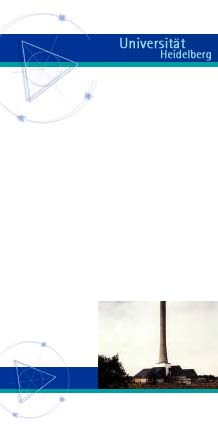|
|
|
|
|
|
|
|
|
|
|
|
|
|
|
|

Project Assignment
Renovation of the existing clinic waste incineration plant to meet the requirements stipulated by law, 17.
BlmSchV
Contractor
State Baden-Württemberg, represented by the Heidelberg
University's planning department
Our Services
![]() Concept
Concept
![]() Compilation
of the construction budget
Compilation
of the construction budget
![]() Authorization
planning
Authorization
planning
![]() Invitation
to bidders
Invitation
to bidders
![]() Contract evaluation
and award assistance
Contract evaluation
and award assistance
![]() Construction
engineering
Construction
engineering
![]() Operation commencement
and trial operation assistance
Operation commencement
and trial operation assistance
Starting
Situation
The Heidelberg University waste incineration plant was
constructed 1979/80 as central plant for the disposal
of infectious clinic waste material; it serves the university clinics,
the medical institute, the city hospital
facilities, the Cancer Research Center and the dialysis stations. In order
to obtain the operating permit
extension, it was necessary to renovate the complete system to meet all
requirements stipulated by the 17.
BlmSchV ordinance.
Results
![]() first plant in Germany to be refurbished with the newest flue gas technology
according to the 17. BlmSchV
first plant in Germany to be refurbished with the newest flue gas technology
according to the 17. BlmSchV
ordinance
![]() first to use
active coal and low temperature catalyst technology for reduction of dioxine
and nitrogen
first to use
active coal and low temperature catalyst technology for reduction of dioxine
and nitrogen
dioxide exhaust
![]() reliable plant
operations using newest technology
reliable plant
operations using newest technology
![]() planning and
construction time: 1989-1991 - Commencement of operations /Trial run:
1991
planning and
construction time: 1989-1991 - Commencement of operations /Trial run:
1991
Facts and Figures
![]() Number of incineration units: 2
Number of incineration units: 2
![]() Burning capacity per unit: max. 600 kg/h
Burning capacity per unit: max. 600 kg/h
Fuel
gas retarding technology:
![]() fabric
dust removal for separation of dust and heavy metal particles
fabric
dust removal for separation of dust and heavy metal particles
![]() two-phased
wet wash for the removal of acidic gas
two-phased
wet wash for the removal of acidic gas
![]() active
coal reactor for separation of dioxin / furan and heavy metal particles
active
coal reactor for separation of dioxin / furan and heavy metal particles
![]() SCR-catalyst
for NO2 reduction
SCR-catalyst
for NO2 reduction
![]() vacuum
ice-steam system for upgrading of washing suspension
vacuum
ice-steam system for upgrading of washing suspension
Type of waste treated:
![]() refuse, similar to domestic waste, from the departments for infectious
diseases
refuse, similar to domestic waste, from the departments for infectious
diseases
![]() animal
carcasses
animal
carcasses